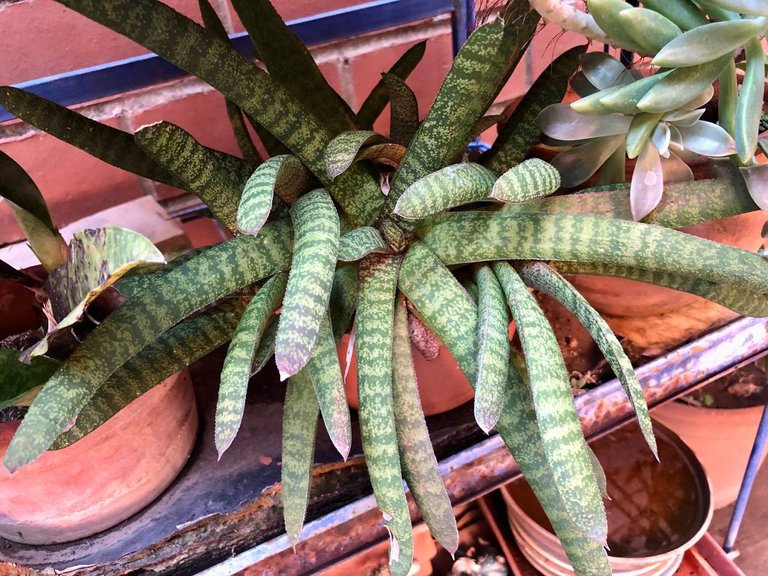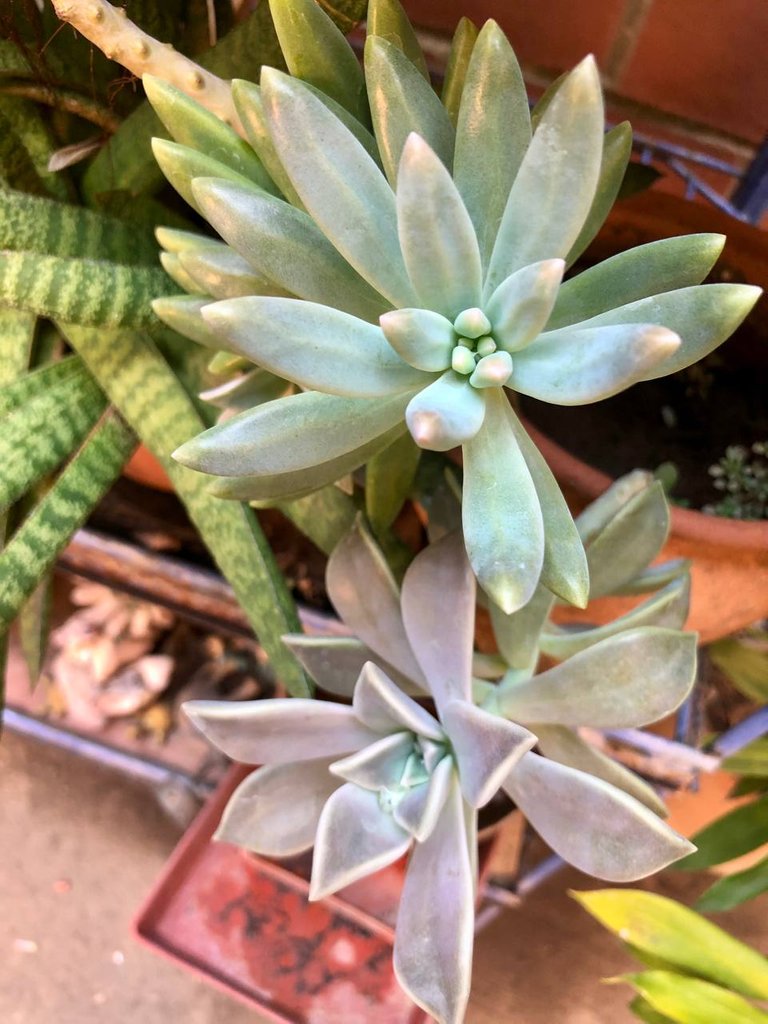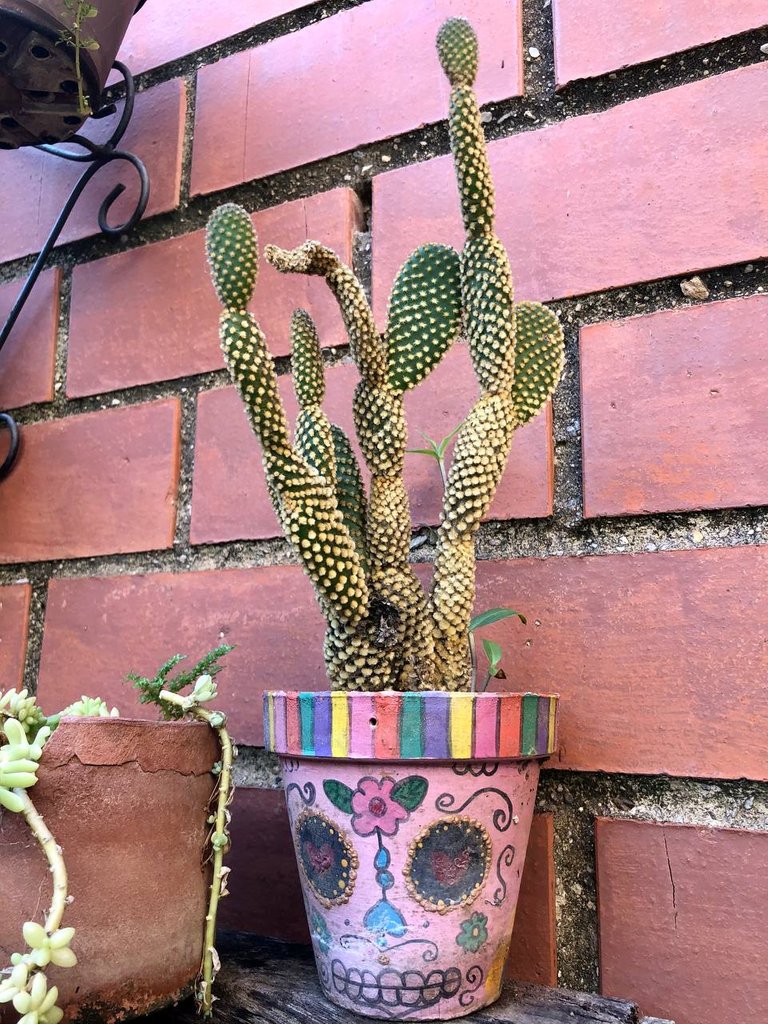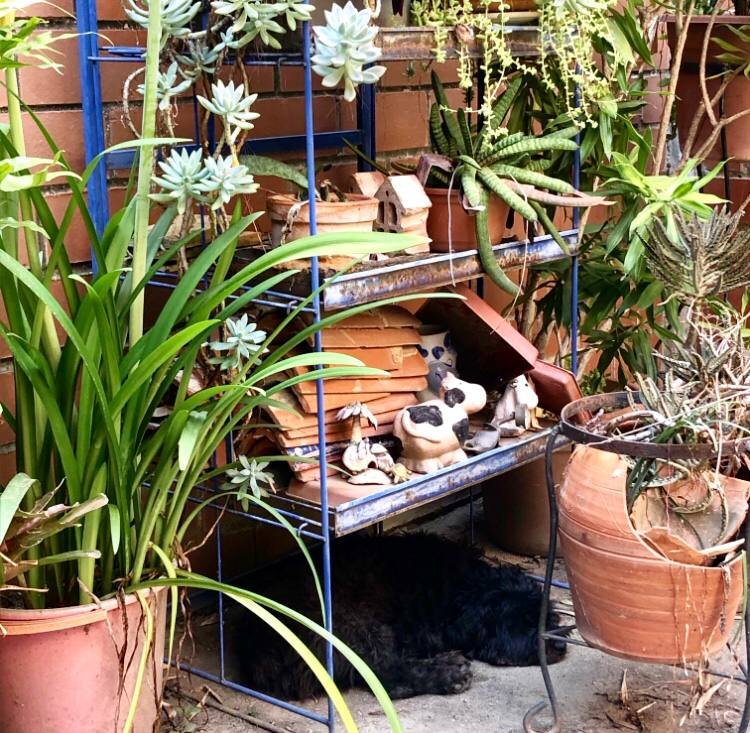
Saludos amigos de Hive, es un placer escribir y compartir experiencias con ustedes y más en esta maravillosa comunidad donde puedo compartir y conocer un poco más sobre las plantas que más me gustan, los cactus y las suculentas. En este primer post, quiero darles un pequeño paseo por mi patio, un lugar muy verde y relajante en donde se encuentran varias de estas lindas plantas.

Greetings friends of Hive, it is a pleasure to write and share experiences with you and more in this wonderful community where I can share and know a little more about the plants I like the most, cacti and succulents. In this first post, I want to give you a little walk through my backyard, a very green and relaxing place where you can find several of these beautiful plants.
Hace apenas dos años he comenzado con el cuidado de los cactus y suculentas de mi madre, una apasionada de las plantas en general, quien me inculcó ese gusto. Hoy en día mantengo su colección he ido agregando unas variedades más, a continuación les presento algunas de ellas.

Just two years ago I started with the care of cacti and succulents from my mother, a passionate of plants in general, who instilled in me that taste. Nowadays I keep her collection and I have been adding some more varieties, here are some of them.

La Gasteria Carinata o Aleta de tiburón: es una especie de planta suculenta perteneciente a la familia Xanthorrhoeaceae. Esta peculiar planta, de origen sudafricano, es ideal para colocar en ventanas, patios o balcones muy iluminados pero que no reciban luz directa, ya que sus hojas podrían tornarse de un color marrón. Si deseas tener una, es importante que sepas que el suelo debe ser algo arenoso, con un buen drenaje y cambiar su maceta aproximadamente cada 3 años.

Gasteria Carinata or Shark's Fin: is a species of succulent plant belonging to the Xanthorrhoeaceae family. This peculiar plant, of South African origin, is ideal to place in windows, patios or balconies that are well lit but do not receive direct light, since its leaves could turn brown. If you wish to have one, it is important to know that the soil must be sandy, with a good drainage and to change its pot approximately every 3 years.

Dudleya greenei Rose: es una especie de planta suculenta perteneciente a la familia de las crasuláceass. Es la planta perfecta para quienes adoran las plantas pero están algo ocupados para tener un cuidado constante, pues son bastante resistentes a largos períodos de sequía y pueden almacenar agua en sus hojas, de allí su grosor. Igualmente, si vives en un lugar muy seco no habrá problemas para disfrutar de esta variedad y agregarla a tu colección.

Dudleya greenei Rose: is a species of succulent plant belonging to the crassulaceae family. It is the perfect plant for those who love plants but are somewhat busy to have a constant care, because they are quite resistant to long periods of drought and can store water in their leaves, hence its thickness. Likewise, if you live in a very dry place there will be no problem enjoying this variety and adding it to your collection.

Euphorbia Lactea Haw, también como, Árbol de huesos de dragón, cactus candelabro, planta candelabro o Cardón: Euphorbia lactea, es una especie fanerógama perteneciente a la familia de las euforbiáceas. Que prefiere los climas tropicales y húmedos, esta planta brillante de unos 3 lados es considerada venenosa por su sabia lechosa. La de mi jardín está fuertemente custodiadad por el capitán Febo, de la película de Disney “El jorobado de Notre Dame”.

Euphorbia Lactea Haw, also as, Dragon Bone Tree, Candelabra Cactus, Candelabra Plant or Cardon: Euphorbia lactea, is a phanerogamous species belonging to the Euphorbiaceae family. Preferring tropical and humid climates, this shiny, 3-sided plant is considered poisonous because of its milky sap. The one in my garden is heavily guarded by Captain Phoebus, from the Disney movie "The Hunchback of Notre Dame".

El nopal cegador o Opuntia microdasys es una especie perteneciente a la familia Cactaceae, recibe este nombre por las glóquidas que se les clavan en los ojos a los animales que pastan y pueden causarles ceguera, estos pequeños pelitos se desprenden muy fácilmente al tocarse y pueden causar irritación y picor. Peligrosa pero hermosa, esta variedad se debe regar de forma frecuente, pero con poca cantidad de agua y mantenerse en un lugar con sol directo en plantas adultas y en semisombra para plantas jóvenes.

The blinding cactus or Opuntia microdasys is a species belonging to the Cactaceae family, it receives this name because of the glochids that stick in the eyes of grazing animals and can cause blindness, these small hairs come off very easily when touched and can cause irritation and itching. Dangerous but beautiful, this variety should be watered frequently, but with little water and kept in a place with direct sun for adult plants and in semi-shade for young plants.

Estas son algunas de las muchas plantas que se encuentran en mi casa y que iré compartiendo con ustedes, espero que disfruten de conocer un poco más de suculentas y cactus, así como lo hace mi perrita, quien adora descansar en sus alrededores.

These are some of the many plants found in my house that I will be sharing with you, I hope you enjoy learning a little more about succulents and cacti, as well as my little dog, who loves to rest in her surroundings.

The rewards earned on this comment will go directly to the person sharing the post on Twitter as long as they are registered with @poshtoken. Sign up at https://hiveposh.com.